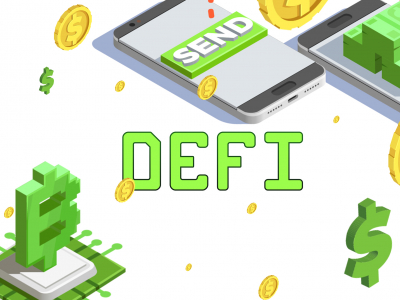Whether it is the blocksize debate or a change in bitcoin price,bitcoiners love to speculate. “One of the great mysteries of the digital age” which always keeps them busy is the question who the ‘real’ Satoshi Nakamoto is.
His ‘true identity’ is fairly regularly disclosed only to be discarded soon afterwards, until the next ‘real Satoshi’ comes along. As the History of Bitcoin puts it, “according to legend, Satoshi Nakamoto began working on the Bitcoin concept in 2007. While he is on record as living in Japan, it is speculated that Nakamoto may be a collective pseudonym for more than one person.”
In 2008, Satoshi authored the white paper entitled Bitcoin: A Peer-to-Peer Electronic Cash System, which became a point of reference in every discussion concerning the very basics of bitcoin and blockchain. Notably, Satoshi’s original vision has been variously referred to during the blocksize debate, which divided Core developers into two camps and has been ongoing since 2013, with its most intensive phase throughout 2015.
There have been various attempts to identify the creator of bitcoin, starting with Leah McGrath Goodman writing for Newsweek in 2014 that a California-based engineer Dorian Nakamoto is the real Satoshi.
While denying the Newsweek’s claim, Dorian Nakamoto has spoken positively about the cryptocurrency in an interview with Jeff Handler in October 2015:
I’d like to see how Bitcoin evolves into the next stage. How it encounters this problem, I won’t say problem, but government is always trying to encroach. Same thing with banks. And we will have to withstand the storm of what’s going to happen to our dollars as the international standard exchange currency….The biggest thing is we can’t possibly pay. My hope is that the top level designers, the creators, think about that.
According to another hypothesis launched by Nathaniel Popper in May 2015, “much of the most convincing evidence pointed to a reclusive American man of Hungarian descent named Nick Szabo.” Szabo repeatedly denied being Satoshi, just like Dorian Nakamoto did before him.
Subsequently, in December 2015 an Australian tech entrepreneur Craig Wright was suggested as the person who could have created bitcoin and most recently, in February 2016 a Polish programmer Paweł Pszona was nominated as Satoshi.
The fact that Wright has never publicly confirmed or denied media allegations was apparently sufficient for the story to be picked up again both by FT Alphaville in March 2016 and Cryptocoins News in April 2016.
In February 2016, a woman was named as an alleged creator of bitcoin. Web developer and self-proclaimed “psychonaut, anarchist footballer and tactical urban cyclist” ✖, a.k.a. Aaron Alan Alexander (Aha Hah) identified Margaret Runchey as the inventor of the cryptocurrency.
Runchey is known as a holder of several patents related to the so-called Semantic Model of Everything, but, rather ironically, she seems to be a figure even more mysterious than Satoshi Nakamoto himself.
The Model of Everything shares a number of similarities with bitcoin, such as the importance of decentralisation and elimination of third parties. It also mentions offline wallet addresses and establishes a chain of ownership very similar to the blockchain technology, as pointed out by JP Buntinx.
Another woman who has been suggested as the authentic bitcoin creator and immediately rejected the claim was an economic sociologist and research fellow of the Oxford Internet Institute Vili Lehdonvirta.
Why is it important?
Nathaniel Popper has argued that identifying the real Satoshi is not of any significance anymore:
At this point, the creator’s identity is no longer important to Bitcoin’s future. Since Satoshi stopped contributing to the project in 2011, most of the open-source code has been rewritten by a group of programmers whose identities are known.
Jeff Handler, however, disagreed with that giving the reasons why it still really matters who created bitcoin:
…the unique mindset, convictions and motivations that governed “Satoshi’s” approach have had a meaningful, lasting effect on the enterprise, and they warrant examination. In this regard, Satoshi Nakamoto becomes more than the "genius” (or geniuses) who created Bitcoin—he also created Bitcoin, took no credit, and left the fortune amassed by his own creation completely untouched, all in order to best preserve the purity of a powerful idea. And that is a world-changing thing, quite likely unique in human history.
Most recently, Alex Fitzpatrick argued that knowing who Satoshi was is “more than a mere curiosity” and there is at least one serious reason why his identity is important, namely Satoshi’s huge share of 1.1 million bitcoins that potentially can be reclaimed at any given moment. Or as Fitzpatrick put it,
…the destiny of a supposedly decentralized currency may rest in the hands of one person — exactly the fate it was created to avoid.
While the speculations around the identity of Satoshi Nakamoto continue to attract the attention of both bitcoiners and mass media, they also inspire bitcoin-related humour and entertainment, such as the short film entitled Finding Satoshi Nakamoto, which was included in the official selection of the BITFILM FESTIVAL 2015.
Diana Bogdan

















